Airmail stamps were introduced to expedite the delivery of mail via aircraft, emerging in the early 20th century as aviation technology advanced. Distinct from regular postage stamps, airmail stamps often featured unique designs and higher denominations to cover the additional costs of air transportation.
Some of these early issues, due to their rarity and historical significance, are now considered among the most valuable airmail stamps. Their creation was essential during a time when air travel was still a new and costly mode of transport, making these stamps not only practical but also highly collectible today.
The first official airmail service began in 1911 in the United Kingdom. However, it was not until 1918 that the United States issued its first airmail stamp. This stamp, known as the “Curtiss Jenny,” marked a significant milestone in postal history. Over the decades, airmail services expanded globally, leading to the issuance of various airmail stamps by different countries.
These stamps often depicted airplanes, pilots, and other aviation-related themes. The designs evolved to reflect advancements in aviation technology and changes in postal services.
Airmail vs Regular Postage Stamps
Airmail stamps were distinct in several ways. Firstly, they often had higher denominations to cover the cost of air transport. This was necessary because air mail was more expensive than ground or sea mail. Secondly, the designs of airmail stamps were unique, often featuring aviation themes. This helped to differentiate them from regular postage stamps. Thirdly, airmail stamps were sometimes issued in limited quantities, making them rarer and more valuable to collectors. This rarity contributes to their status as some of the most valuable airmail stamps today.
Most Valuable Airmail Stamps
1. The Inverted Jenny
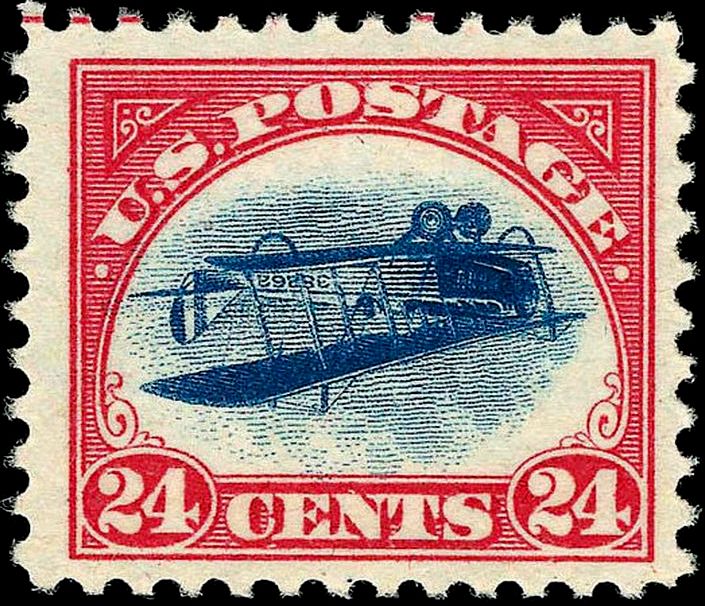
The Inverted Jenny is one of the most iconic airmail stamps. Issued by the United States in 1918, it features an inverted image of a Curtiss JN-4 airplane. Only 100 of these error stamps were released, making them extremely rare. The stamp’s rarity and unique error have made it highly sought after by collectors. Its value has appreciated significantly over the years, often fetching high prices at auctions. The Inverted Jenny remains a symbol of philatelic rarity and historical significance.
VALUE: $2 Million
2. The Newfoundland 1932 Airmail Issue

With an inverted surcharge. These stamps were printed in sheets of four for use on the return flight of the Dornier DO-X from New York to Germany. While it has been estimated that as many as 13 blocks of four may have had the inverted surcharge applied in error, only 20-40 stamps still exist today. A major rarity,
VALUE: $12,000
3. The Newfoundland 1930 Airmail Issue
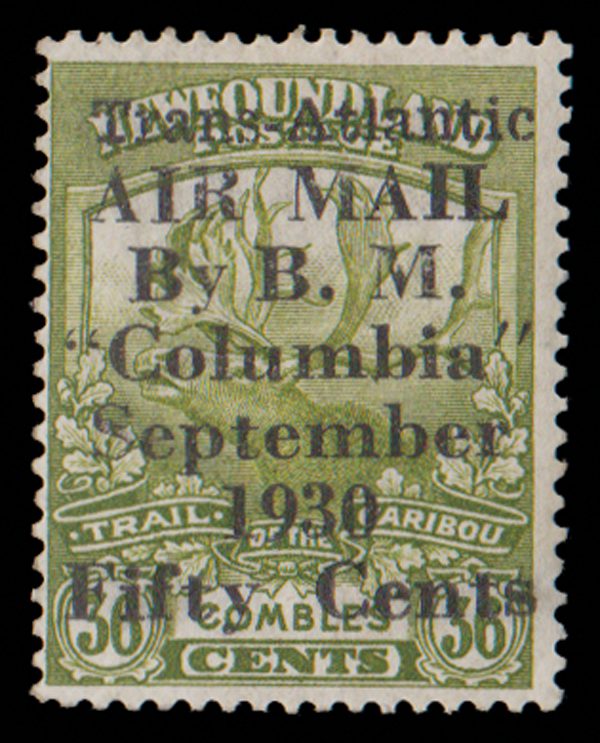
This stamp is named after the monoplane “Miss Columbia,” flown by Captain Errol Boyd and Lieutenant Harry Connor during their journey from Harbour Grace to Croydon Airport, London. To commemorate the flight of the Columbia from Harbour Grace, N.L., to the Scilly Isles, off the southwest coast of England, only 300 copies of the 35-cent Caribou stamp were overprinted. It is believed that at least half of these overprinted stamps were used.
VALUE: $10,000
4. The Graf Zeppelin Series
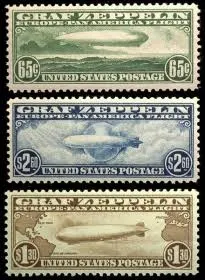
The Graf Zeppelin series, issued in 1930 by the United States, is another notable example. These stamps were created to cover the cost of mail carried on the Graf Zeppelin airship. The series includes three stamps of different denominations: 65 cents, $1.30, and $2.60. Each stamp features an image of the Graf Zeppelin in flight. The limited issuance and historical context make these stamps highly desirable. Collectors value them for their unique designs and connection to early airship mail services.
VALUE: $1,500
5. The Australia 1931 Airmail Stamp
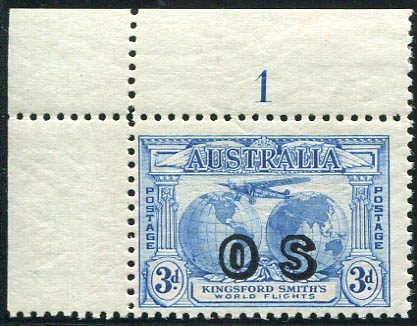
The Australia 1931 airmail stamp is another significant example. Issued to commemorate the first airmail flight from Australia to England, it features an image of an airplane flying over the globe. The stamp’s limited issuance and historical context make it highly valuable. Collectors appreciate its unique design and historical significance. The Australia 1931 airmail stamp continues to be a sought-after item in philatelic circles.
VALUE: $1,000
6. The Brazil 1930 Zeppelin Issue
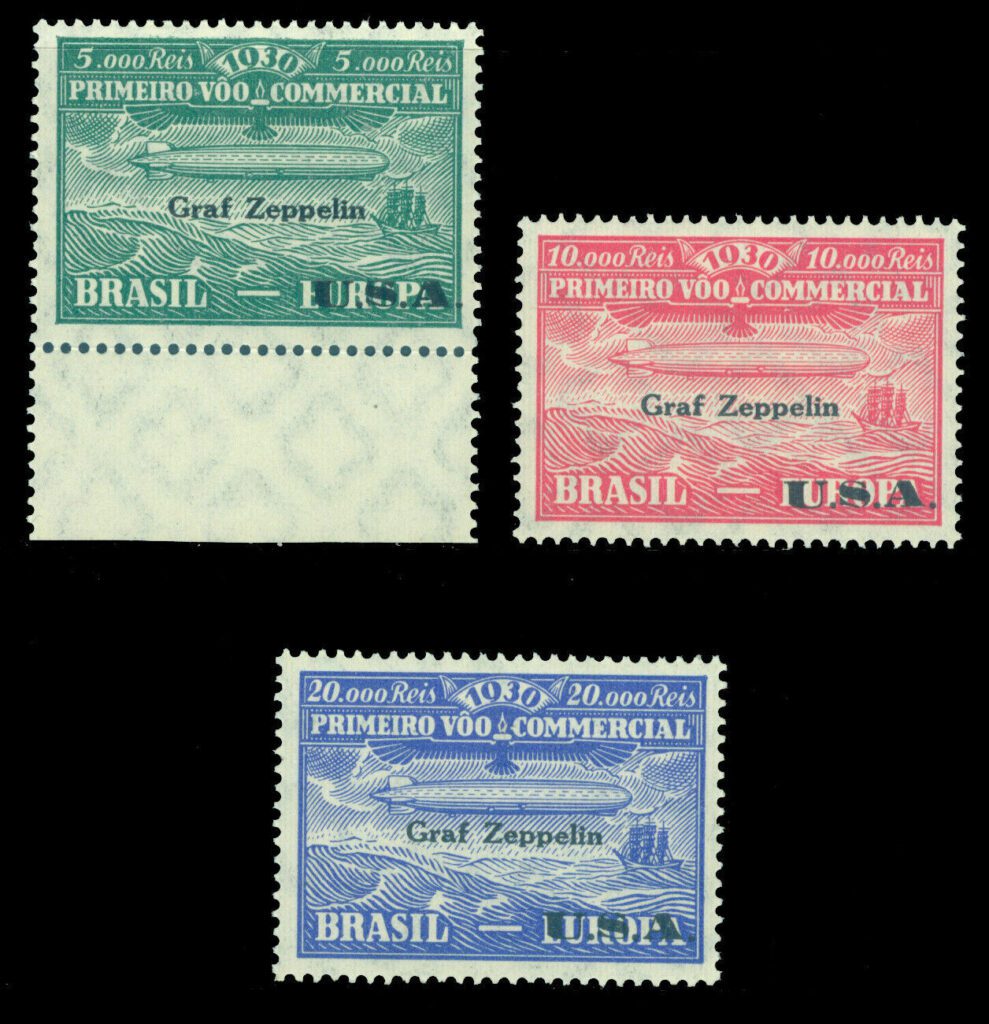
The Brazil 1930 Zeppelin issue is also noteworthy. These stamps were issued to cover the cost of mail carried on the Graf Zeppelin airship’s South American flights. The series includes several stamps of different denominations, each featuring an image of the Graf Zeppelin. The limited issuance and historical context make these stamps highly desirable. Collectors value them for their unique designs and connection to early airship mail services. The Brazil 1930 Zeppelin issue remains a prized item in philatelic collections.
VALUE: $700
Understanding these notable airmail stamps provides valuable insights into their historical and philatelic significance. Each stamp represents a unique moment in the history of airmail services. Collectors and historians alike appreciate the unique designs and historical context of these stamps. These notable airmail stamps continue to be highly prized, reflecting their enduring importance in philately.
Factors Determining Value
Rarity and scarcity are primary factors in determining the value of airmail stamps. The fewer the number of stamps issued, the higher their value. Limited issuance often results from printing errors, special commemorative releases, or short production runs. For example, the Inverted Jenny’s value stems from its limited release of only 100 error stamps. Collectors highly prize such rare items, making them some of the most valuable airmail stamps. Scarcity also arises when stamps are withdrawn from circulation shortly after issuance. This limited availability significantly boosts their market value.
Condition & Quality
The condition and quality of airmail stamps play a crucial role in their valuation. Stamps in mint condition, free from any damage or wear, are highly sought after. Factors such as centering, gum condition, and color vibrancy are critical in assessing quality. Stamps with perfect centering and intact gum command higher prices. Conversely, stamps with tears, creases, or faded colors are less valuable. Proper storage and handling are essential to maintain a stamp’s condition. Collectors often use protective mounts and albums to preserve their stamps. The most valuable airmail stamps are usually those in pristine condition.
Collecting Airmail Stamps

Starting an airmail stamp collection requires some basic knowledge and preparation. Beginners should first educate themselves about airmail stamps and their history. Reading books, joining philatelic societies, and attending stamp shows can provide valuable insights. Acquiring a good-quality magnifying glass and stamp tongs is essential for handling stamps without causing damage. Beginners should start with affordable stamps before moving on to rarer, more expensive items. Building a network of fellow collectors can also be beneficial. Networking allows for the exchange of information and stamps, enhancing the collecting experience.
Identifying Authentic Stamps
Authenticity is crucial in stamp collecting. Collectors must be able to distinguish genuine stamps from forgeries. Examining the paper, printing techniques, and watermarks can help identify authentic stamps. Consulting expert catalogs and reference books provides detailed information on specific issues. Seeking expert opinions and certifications can also ensure authenticity. Reputable dealers and auction houses often provide guarantees of authenticity. Collectors should be cautious when purchasing stamps from unknown sources. Ensuring authenticity protects the value and integrity of the collection.
Displaying Collections
Proper preservation is essential to maintain the condition and value of airmail stamps. Stamps should be stored in a cool, dry environment away from direct sunlight. Using acid-free albums and protective mounts helps prevent damage. Stamps should be handled with clean hands or stamp tongs to avoid oils and dirt. Regular inspection of the collection can help identify any issues early. Displaying stamps in frames or albums allows for safe viewing and appreciation. Proper preservation techniques ensure the longevity of the collection.
Understanding Market Values
Understanding market values is important for both buying and selling stamps. Collectors should stay informed about current market trends and prices. Consulting price catalogs and auction results provides a benchmark for stamp values. Networking with other collectors and dealers can offer insights into market conditions. Attending stamp shows and auctions allows collectors to observe market dynamics firsthand. Being informed about market values helps in making prudent purchasing and selling decisions. Knowledge of market values enhances the overall collecting experience.
Building A Thematic Collection
Building a thematic collection can add focus and enjoyment to stamp collecting. A thematic collection revolves around a specific theme, such as aviation history or airmail routes. Collectors can choose themes that interest them personally. Thematic collections can include stamps from various countries and periods. This approach allows for a diverse and engaging collection. Thematic collecting also provides opportunities for research and learning. Building a thematic collection can be a rewarding aspect of stamp collecting.
Investment Potential Of Airmail Stamps
Airmail stamps offer significant investment potential due to their rarity and historical significance. Investors view them as tangible assets with long-term value. The limited supply of rare airmail stamps ensures their continued demand. Properly preserved stamps can appreciate significantly over time. Diversifying a portfolio with rare stamps can provide financial stability. Investors should seek expert advice and certifications to ensure authenticity. The most valuable airmail stamps often serve as reliable investment vehicles.
Risks & Considerations
Investing in airmail stamps carries certain risks that must be considered. Market volatility can affect stamp values. Economic downturns may reduce demand for high-value collectibles. Authenticity and condition are critical factors. Forgeries and damaged stamps can significantly reduce value. Investors should conduct thorough research and seek expert opinions. Proper storage and preservation are essential to maintain value. The most valuable airmail stamps require careful handling and expert appraisal.
Understanding market trends and investment potential is crucial for collectors and investors. The dynamic nature of the market requires continuous monitoring and adaptation. Proper knowledge and expert advice can maximize the benefits of investing in airmail stamps. The most valuable airmail stamps continue to be prized assets in the world of philately.
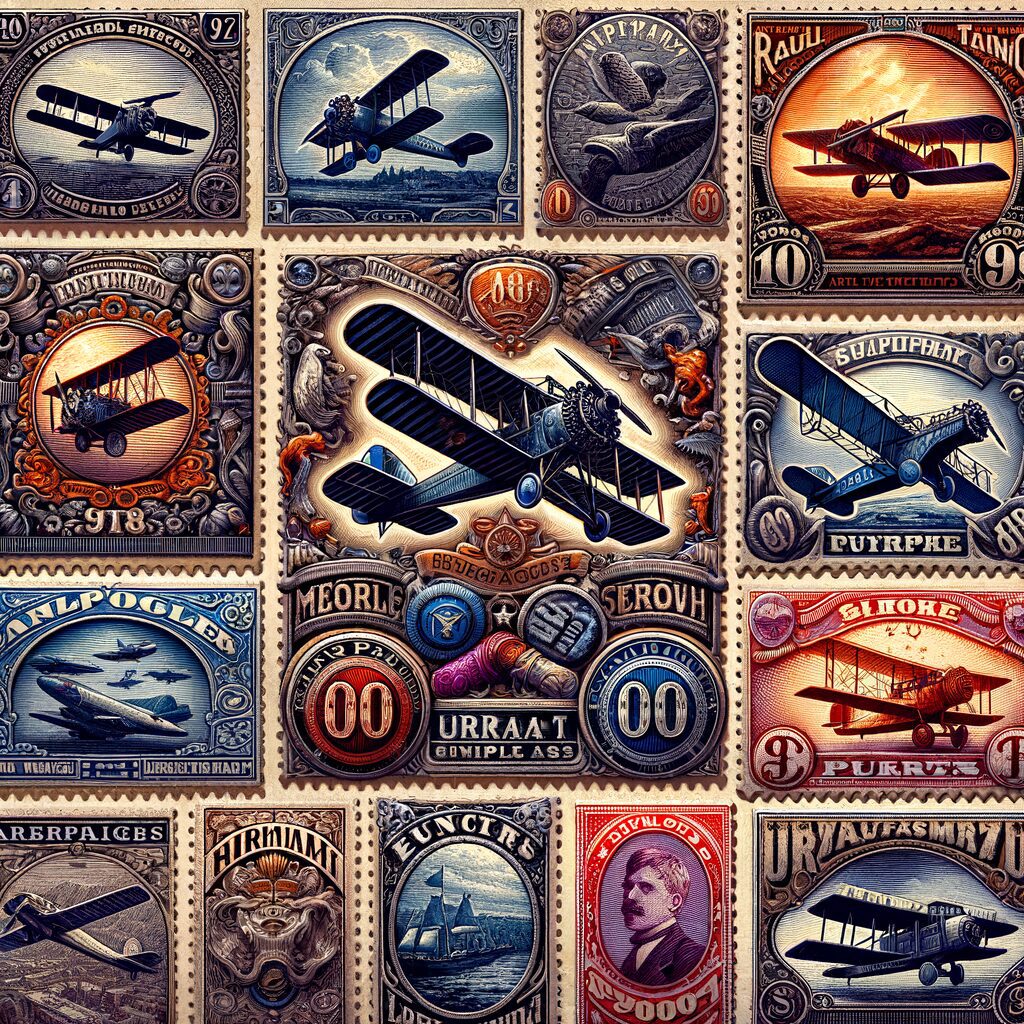


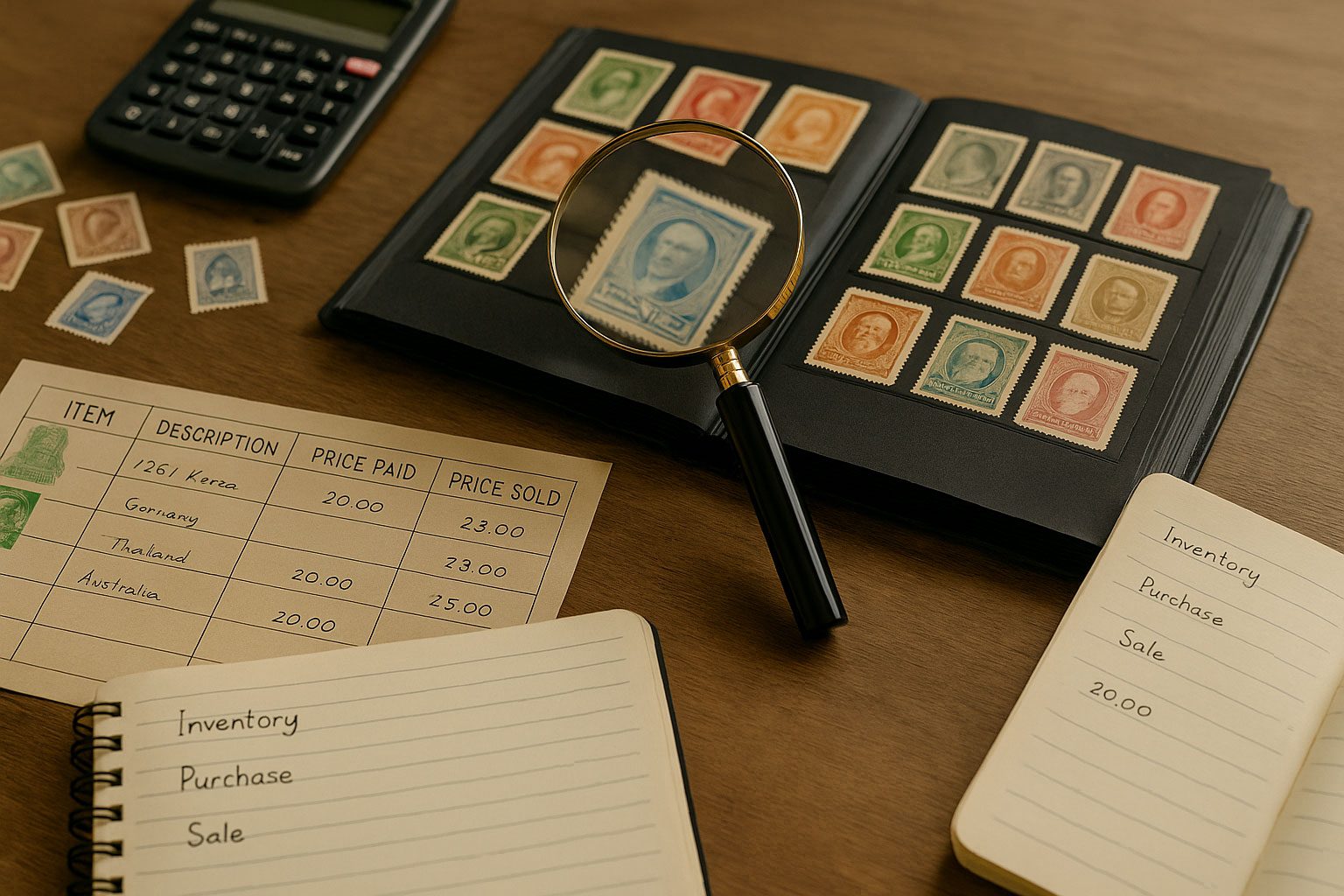
Leave a Reply